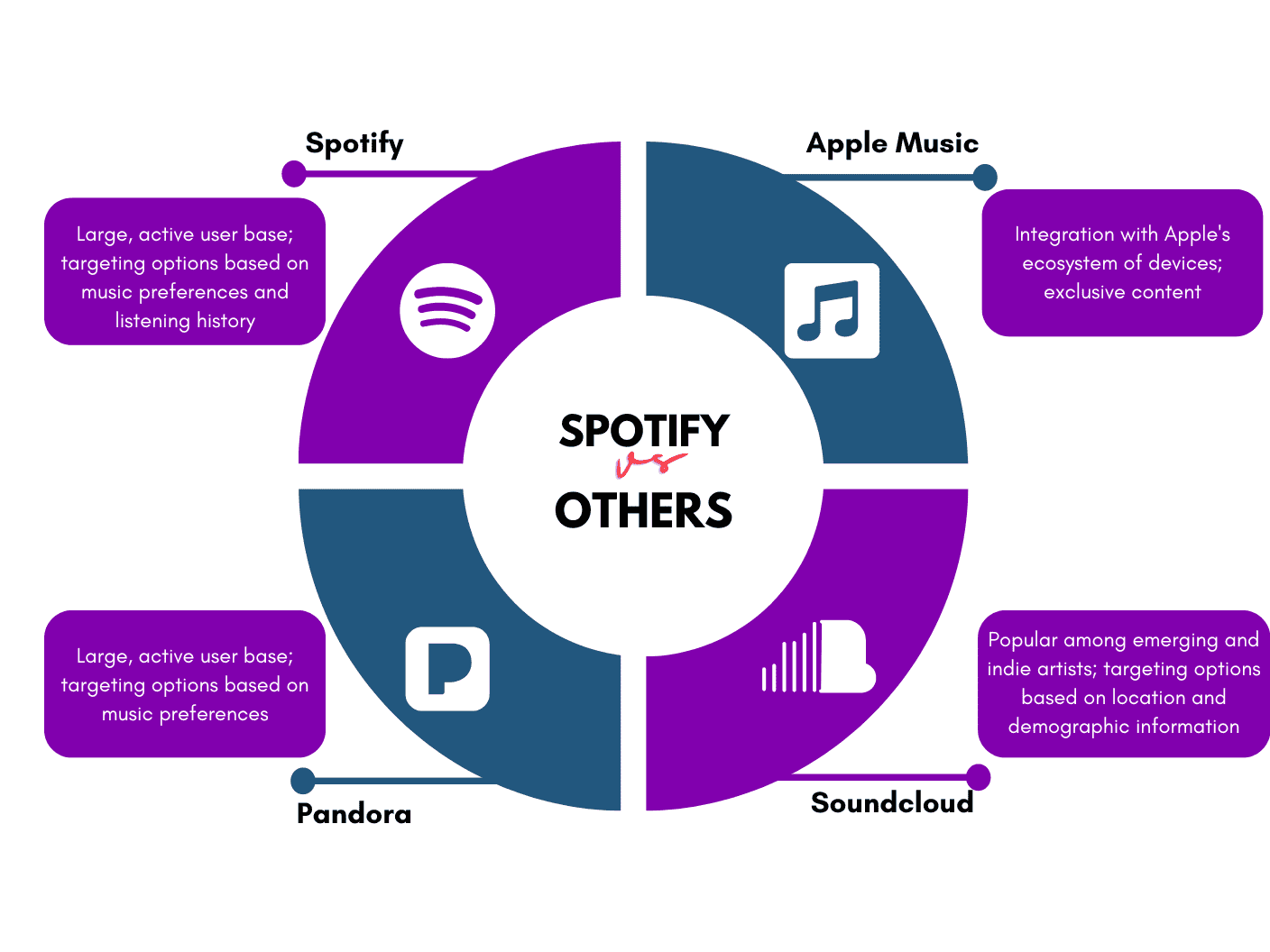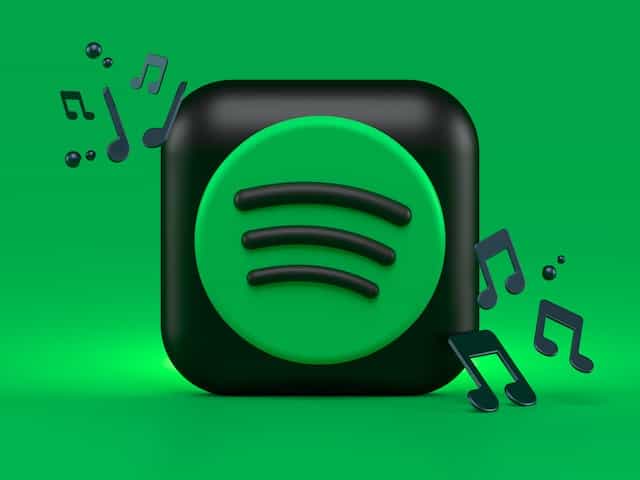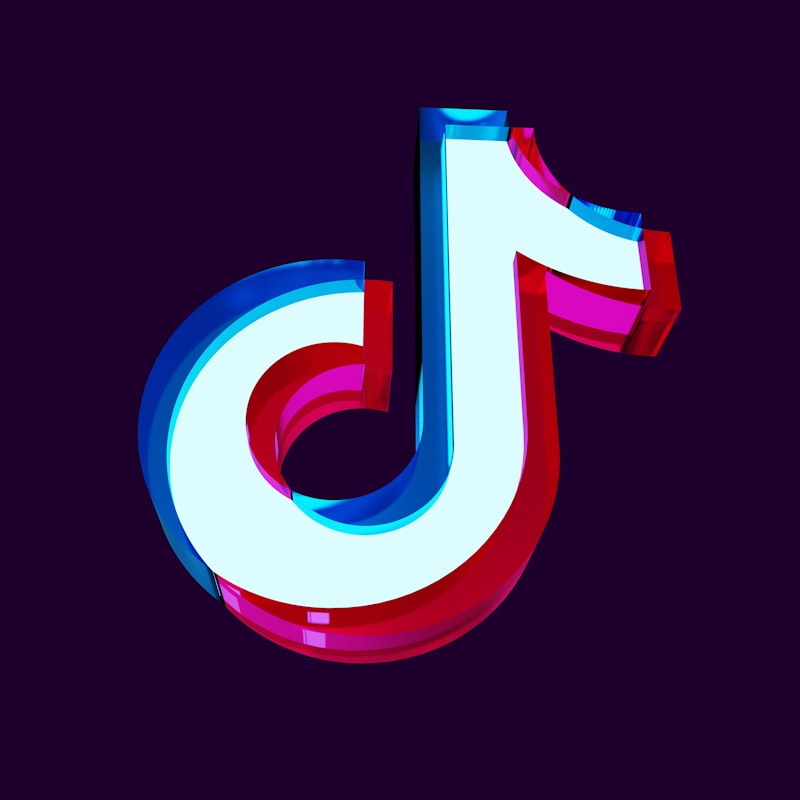Spotify advertising is a powerful tool to help you reach new listeners and grow your fanbase. With its large user base, targeting options, and low cost, Spotify advertising is an excellent choice for musicians of all levels. By following the steps outlined in this blog, you'll be on your way to creating a successful ad campaign that promotes your music and reaches new audiences. So, don't wait! Try out Spotify ads today and see how they can help you grow your music career.
Have you ever wondered how some musicians seem to come out of nowhere and suddenly become massive hits? Chances are, they used the power of advertising to get their music in front of new listeners. And one platform that can help you do the same is Spotify.
Spotify has over 345 million monthly active users, making it the world's most prominent music streaming platform. So, it's no wonder many artists are using Spotify advertising to reach new audiences and grow their fanbase.
This blog will show you how Spotify advertising works, its benefits, and how you can create a successful ad campaign to promote your music. So, whether you're an up-and-coming artist or an established one, you'll learn everything you need to know to make the most of Spotify's advertising potential.
The Benefits of Spotify Advertising
Spotify advertising offers many benefits, making it an intelligent choice for musicians seeking to reach new audiences. Some of these benefits include:
- Targeting specific audiences:
One of the most significant advantages of Spotify advertising is the ability to target your ads to particular listeners. You can target your ads based on age, location, gender, music preferences, and more. This way, you can reach people most likely interested in your music. For example, if you're an EDM artist, you might target listeners who frequently stream dance music. By doing so, you'll reach a more relevant audience who is more likely to listen to your music and follow you on Spotify.
| Targeting Option | Description |
|---|---|
| Demographic targeting | Target users based on age, gender, and language |
| Location targeting | Target users based on country, region, DMA, or city |
| Interest targeting | Target users based on their listening habits and music preferences |
| Real-time context targeting | Target users based on the type of music they are listening to at a specific moment |
| Device targeting | Target users based on the type of device they are using to listen to Spotify |
| Daypart targeting | Target users based on the time of day they are listening to Spotify |
- Low cost:
Spotify ads are relatively cheap compared to other forms of advertising, such as TV or radio ads. This makes it accessible to musicians of all budgets. You don't have to break the bank to get your music in front of new listeners. Instead, you can allocate your budget to reach a large, targeted audience that is likely to be interested in your music.
- Success stories:
-- In 2020, rapper NLE Choppa used a Spotify ad campaign to promote his album "Top Shotta." The campaign targeted hip-hop fans and resulted in a 30% increase in monthly streams and followers. (Source: Spotify for Artists)
-- Indie pop band Wallows used a combination of Spotify ads and social media promotion to increase their reach and grow their fanbase. As a result of their ad campaign, the band saw a 50% increase in monthly streams and a significant increase in social media followers. (Source: Wallows Official Website)
-- Country singer Maren Morris used a Spotify ad campaign to promote her album "Girl." The campaign targeted country music fans and resulted in a 40% increase in monthly streams and followers. (Source: Spotify for Artists)
-- Pop singer Ariana Grande used a targeted Spotify ad campaign to promote her album "Positions." The ad campaign targeted pop and R&B music fans and resulted in a 25% increase in monthly streams and followers. (Source: Spotify for Artists)
These success stories demonstrate the potential of Spotify advertising to help artists reach new listeners and grow their fanbase.

How to Create a Successful Spotify Ad Campaign
Creating a successful Spotify ad campaign is simple. Here's what you need to do:
- Set a budget: The first step to creating a successful ad campaign is setting a budget. Decide how much you will spend on your ad campaign and allocate your budget accordingly. You can start with a small budget to test the waters and adjust it later based on the results of your ad campaign.
- Target the right audience: Once you've set your budget, it's time to target the right audience. Use Spotify's targeting options to reach listeners based on music preferences, age, location, and more. By doing so, you'll get a more relevant audience who is more likely to be interested in your music.
- Compelling ad copy and visuals: The next step is to create effective ad copy and visuals. Your ad copy should be attention-grabbing and memorable, while your visuals should be eye-catching and represent your music style. Use a clear call-to-action to encourage listeners to check out your music. Whether it's following you on Spotify or listening to your latest album, make sure your call-to-action is clear and easy to follow.
- Use tracking links: To measure the effectiveness of your ad campaign, use tracking links. These links will allow you to track how many clicks your ad is getting, how many people are following you, and how many streams you get from your ad campaign. This information can help you optimize your ad campaign and make adjustments to improve its performance.
Spotify Ad Best Practices
To maximize the reach of your Spotify ad campaign, it's essential to follow best practices. Here are some tips to keep in mind:
- Target relevant audiences: Ensure you're targeting the right audience by selecting suitable targeting options. As mentioned earlier, you can target your ad based on factors such as music preferences, age, location, etc. By doing so, you'll reach a more relevant audience who is more likely to be interested in your music.
- Use clear call-to-actions: Your ad copy should have a clear call-to-action that encourages listeners to take action. Whether it's following you on Spotify or listening to your latest album, make sure your call-to-action is clear and easy to follow.
- Optimize for mobile devices: Most people who use Spotify do so on their mobile devices. So, it's crucial to optimize your ad campaign for mobile devices. Make sure your visuals are eye-catching, and your ad copy is easy to read on smaller screens.
- Use A/B testing: To maximize the reach of your ad campaign, use A/B testing. A/B testing involves creating two versions of your ad and comparing their performance. You can determine what works best by testing different ad copy and visuals and optimizing your ad campaign accordingly.
Additional
Questions
How does Spotify advertise?
Spotify advertising works by displaying short audio or video ads in between songs or during breaks in a user's listening experience. These ads can be targeted to specific audiences based on factors such as age, gender, location, and musical preferences. Advertisers can choose to pay per impression, meaning they are charged based on the number of times their ad is shown, or they can pay per click, meaning they are charged only when a user clicks on their ad.
Spotify also offers a range of ad formats, including audio ads, video ads, sponsored sessions, and display ads. Audio ads are the most common form of Spotify advertising, and they play as short audio clips in between songs. Video ads are similar but display a video instead of an audio clip. Sponsored sessions are longer ads that play at the beginning of a user's listening experience, while display ads are static images displayed on the user's screen.
To start with Spotify advertising, you'll need to create an account with Spotify Ad Studio, choose your ad format and target audience, and set your budget. Then, you can upload your ad creative and start your campaign.
How much is a 30-second Spotify ad?
The cost of a 30-second Spotify ad varies depending on several factors, including your target audience, the ad format you choose, and your budget. On average, the cost of a 30-second audio ad on Spotify can range from $10 to $50 or more per thousand impressions (CPM). The cost for video ads can be higher, ranging from $15 to $100 per thousand impressions.
It's important to note that Spotify's advertising platform operates on an auction-based model, which means that the cost of an ad can vary depending on the competition for ad space. Advertisers with larger budgets and specific targeting criteria may end up paying more for their ads, and advertisers with smaller budgets and less specific targeting criteria may pay less.
How much does it cost to advertise with Spotify?
The cost of advertising with Spotify varies greatly depending on many factors, including your chosen ad format, target audience, and budget. For example, a small, targeted audio ad campaign with a budget of $100 might cost as little as $10 to $20 per day, while a more extensive, less targeted video ad campaign with a $5,000 budget might cost hundreds of hundreds of dollars per day.
You can use Spotify Ad Studio's cost estimator tool to better understand your advertising costs on Spotify. This tool allows you to select your target audience, ad format, and budget and see estimated costs based on current market conditions.
How much does it cost to advertise with Spotify?
The cost of advertising with Spotify can vary greatly depending on a number of factors, including the target audience, ad placement, and budget. On average, you can expect to spend anywhere from $250 to $500 per ad campaign. However, several factors can impact the overall cost of your campaign, including:
- Target audience: The more specific and targeted your audience, the more expensive your ad campaign will likely be. This is because targeting a smaller audience requires more resources, such as data analysis and creative development.
- Ad placement: Ad placement also plays a role in determining the cost of your campaign. For example, ads placed within playlists tend to be more expensive than those set within other areas of the app.
- Budget: Your budget will also impact the cost of your campaign. If you have a smaller budget, you may need to scale back on the number of ads or target audience, which can impact the overall cost of your campaign.
Does it Make Sense to Buy a Spotify Ad?
Whether or not it makes sense to buy a Spotify ad will depend on your target audience, budget, and goals. If you want to reach a large, diverse audience and have a moderate to large budget, a Spotify ad could be a great option. On the other hand, if you have a small budget or are targeting a niche audience, other forms of advertising may be more effective.
To determine whether a Spotify ad is right for you, you must consider your goals, target audience, and budget. By considering these factors, you can make an informed decision about whether or not to invest in a Spotify ad.
How Long Can Spotify Ads Be?
Spotify ads can be anywhere from 15 seconds to 30 seconds in length. However, it is important to keep in mind that the length of your ad will impact the overall cost of your campaign. Longer ads tend to be more expensive, requiring more resources to create and place.
When creating a Spotify ad, it is vital to strike a balance between the length of the ad and its impact. While longer ads may have more time to make an impact, they can also become repetitive and annoying to listeners. On the other hand, shorter ads may not have enough time to make a lasting impression.
To determine the best length for your ad, consider your goals, target audience, and budget. By considering these factors, you can create an ad that is both impactful and cost-effective.
Can I use Spotify Advertising to promote my music as an independent artist?
Yes, independent artists can use Spotify Advertising to promote their music to a wider audience. This can be a particularly effective way to reach new fans and build a following on the platform.
Can I use my own music in a Spotify Ad?
Yes, advertisers can use their own music in a Spotify Ad as long as they have the rights to the music. However, it is important to note that not all music is suitable for advertising purposes and it is important to create an ad that is engaging and relevant to your target audience.



